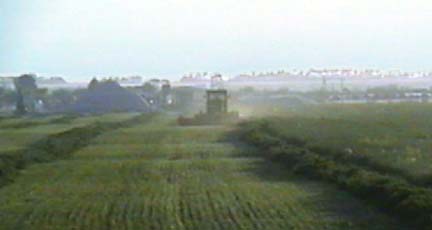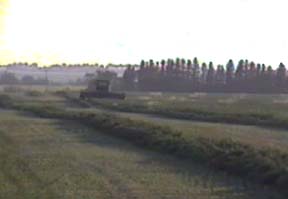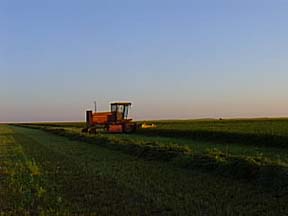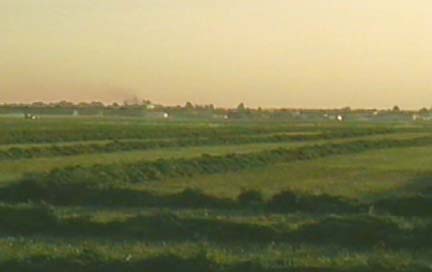
Second Cut
FTLComm - Tisdale
August 4, 1999
It is a lush and full crop of alfalfa that is being swathed just East of Tisdale
as Tisdale Dehydration takes its second crop off. They are running about nine
days behind, but are encouraged by the exceptional yield. The abundance of moisture
produces excellent growth but decreases the quality slightly.
In the mean time crews are charging forward with cutting the second cut of the pellet product and other crews are out there harvesting this year's sun dried crop.



In the picture on the right we can see two dragonflies patrolling an alfalfa seed crop. The regular alfalfa contract runs for three years of harvesting and in the next year the crop is grown for seed. There is an excellent market for alfalfa seed as it actually returns higher profits then when used for pellets or sundried cubes. Those fields being used for seed production are marked with the bee huts. Bees are used in these fields to increase the pollination process.


Once again the illusion of distance is disturbed by this picture that shows the harvesting process as we look toward Tisdale and can see the smoke from the dehydration plant a mile further beyond. This picture was taken with a telephoto lens which tends to not only make things look closer, but reduces the distances in between near and far objects in the picture.
Cutting continues day after day as the swathing crew starts work each morning at seven and shuts down at nine each night. Ranging from Porcupine Plain to Gronlid and St. Brieux they have a lot of fields to process.